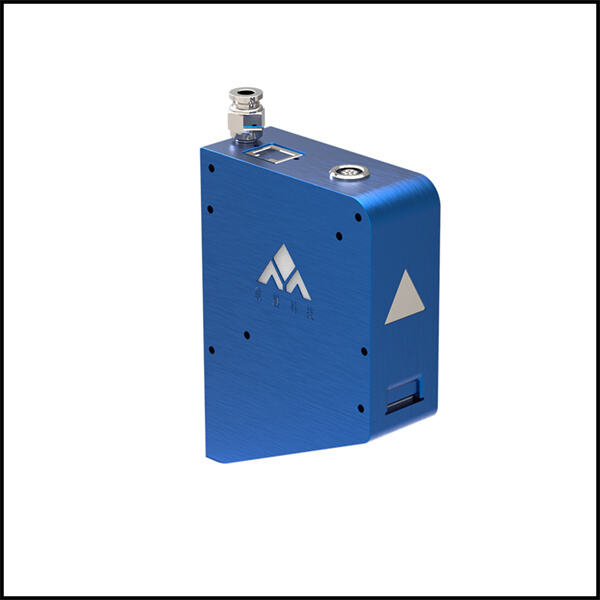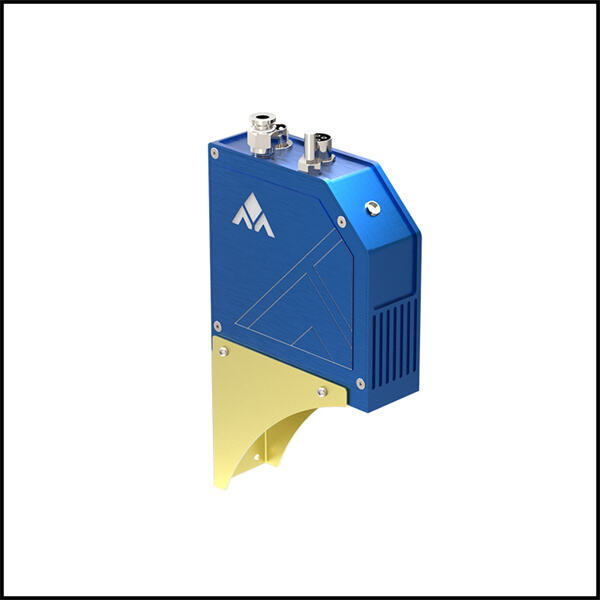They can assist us in numerous ways — from cleaning our homes to inspecting extraterrestrial worlds. But do you know how robots can’t do all those amazing things without something called sensors? Sensors are the robot’s every eye, ear and nose combined. They enable robots to see, hear, and feel what’s going on around them. Each type of sensor provides the robot with some information that helps it to perform its task. So let’s get into it, and take a closer look at some common sensor types that help robots “move” and “wards off” their job duties.
These MINYUE sensors let the robot know how far away it is from objects around it. You can view it this way: when going to play tag you have to watch where you going because you do not want to crash into something or someone! When robots need to avoid crashing into things, proximity laser depth sensor send out signals and then listen, measuring how long it takes them to return to the robot. This process allows the robots to assess the distances to nearby objects and understand if they need to slow down or change their trajectories to avoid colliding with something. They can’t just keep bumping into walls and furniture, or people for that matter!
One more kind of sensors that is crucial for robots is infrared sensor. Infrared sensors are able to sense the infrared light, which is a type of light we cannot see with our naked eyes, yet it can be found all around us. Infrared sensors are used by robots to detect heat and motion, which enables them to follow things or people in their surroundings. In other words, if a robot is searching for a person, it can use an infrared sensor to locate the heat emitted from that person’s body. Infrared sensors play a critical role in path-following robots since they help find the path and an object but avoid a collision on the way. This allows for safe and effective movement.
Other types of sensors that can be used to interact with the environment include proximity and infrared sensors. Some robots can use touch sensors to determine whether something is soft or hard. Such a bot can then touch a pillow lightly and realize that it is soft or touch a stone and feel that it is hard! Others use sound laser light camera sensor to listen for noises or commands, such as when you say “go” or “stop.” This allows robots to better understand what we want them to do.

Indeed, MINYUE low-light sensors like those that trigger a robot seeing in the dark operate by detecting varying amounts of light. For instance, if the robot is placed inside a dark room, the light sensor will be able to inform that it must illuminate something or slowly move to avoid an obstacle as indicated. All type of laser light sensor have a specific function for robots about the understanding of the external environment, these helps the robot to perform the tasks for which they are designed.

The type of MINYUE sensors that a robot uses or how well they operate can largely affect what a robot is capable of doing. A robot that has to run in a maze, for example, will rely mainly on proximity sensors to avoid walls and reach the exit. That means the robot will continuously check how far away it is from walls so it doesn’t crash into them. For example, a robot that follows a colored line on the ground will stay on the track by using color sensors. These color laser line sensor assist the robot in determining the path it needs to take, similar to how you would follow an outlined route in a park. Robot designers can also ensure that their robots perform effectively and efficiently in a wide number of environments and situations by selecting the appropriate sensors for the task at hand.

Robotics is a sector that relies heavily on sensor technology to enable safe and accurate operations, so selecting the correct sensor types is essential. Robots understand what is happening around them and complete tasks efficiently thanks to various sensors informing their decision making, which can be1 From detecting obstacles, following a path, or responding to commands, laser measurement sensor are crucial to robots interacting with their immediate environment.
Provide powerful welding robot front loading, side loading, inverted loading, gantry mounting, intelligent trajectory planning for multiple robots, multiple external axes, and positioner for cooperative work. Realize robot motion simulation, collision detection, singularity avoidance and axis limit detection.
Beijing Minyue Technology Co.,LTD,as the world's leading high-tech enterprise of non-teaching intelligent application of industrial robots.We specialize in flexible intelligent manufacturing with our self-developed RobotSmart - Intelligent Decision Making System, SmartVision - Binocular Structured Light Vision System, and SmartEye - Laser Vsion Seam Tracking System. Provide a new generation of intelligent robot welding and cutting solutions.
Fast, accurate, completely No-Programming, high efficiency and high precision. It solves the complicated teaching process of traditional robots and saves the downtime of teaching process.
Adopting the function of finding and tracking, scanning the weld seam, confirming the position and information of the weld seam, correcting the position of the weld seam between the 3D digital model drawing and the actual workpiece, and solving the problem of bias weld due to the error of incoming materials and thermal deformation.